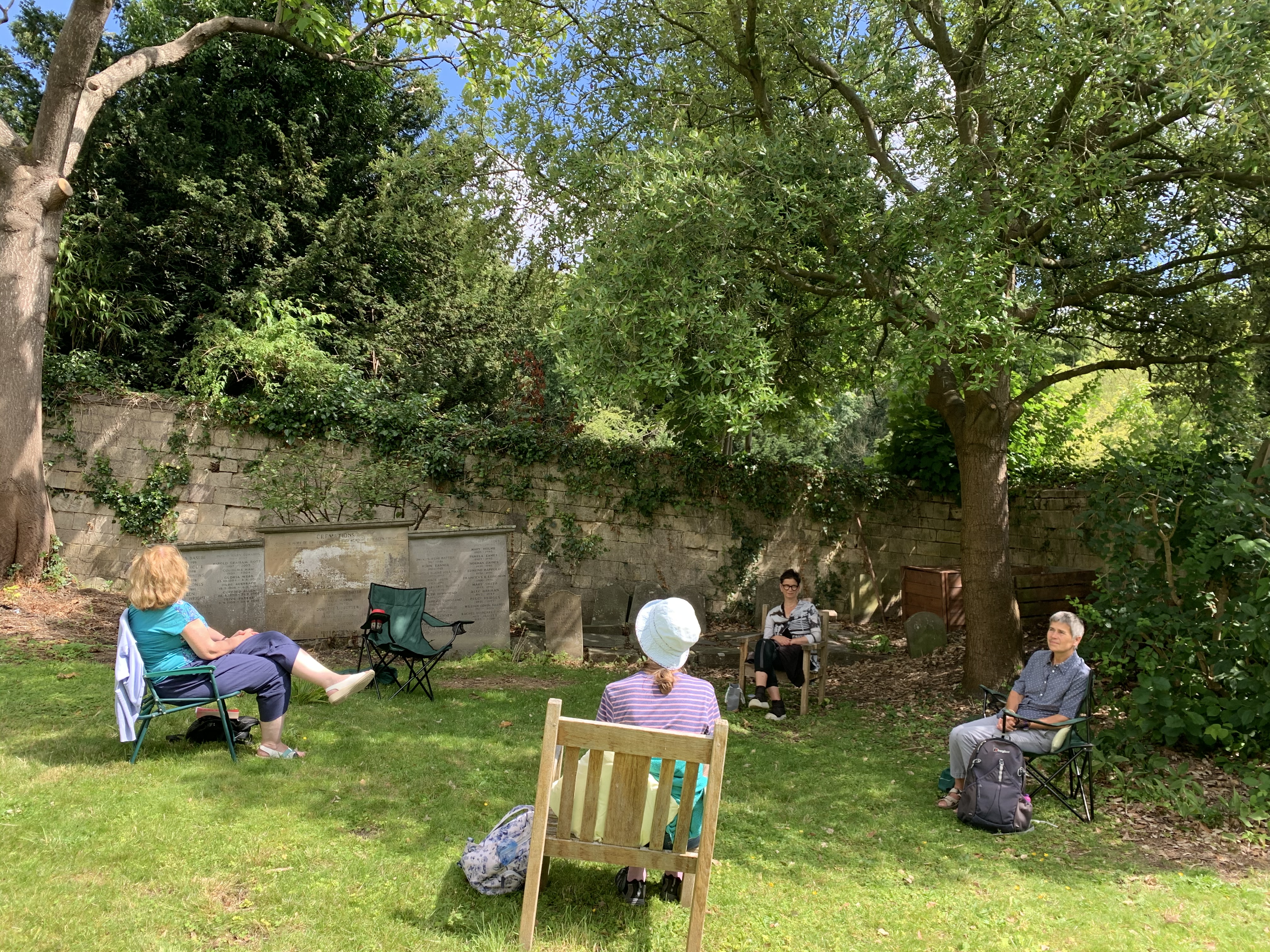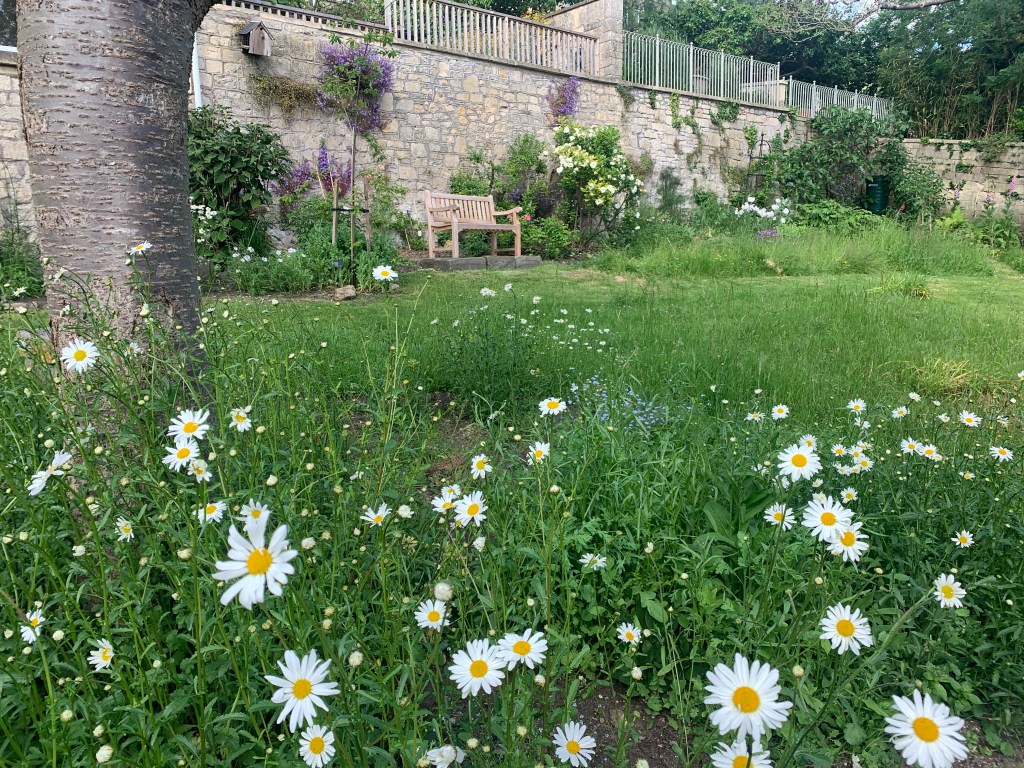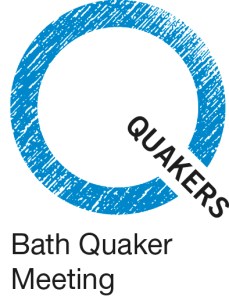Bath Quaker Burial Ground
The Quaker Burial Ground is a beautiful walled garden hidden behind large wooden doors on Clarendon Road in the heart of Widcombe, Bath. Burials no longer take place but it is used for the scattering of ashes and for occasional gatherings and meetings.

If you would like to visit the Burial Ground please contact Bath Quakers for details, or leave a message on 07818 760042.
Occasional Open Days are held at the Burial Ground. Please contact us for details. The Burial Ground will be open to visitors in September 2024 as part of the Heritage Open Days – watch here for details.
Key features:
- Wildflower areas
- Peaceful space for quiet reflection
- Wildlife haven
- Stones with stories
- Quaker monuments
- Bath Skyline view
- Great for fungi
See entry at the Bath Record Office
A brief history of the Quaker Burial Ground in Bath
Early Friends could not be buried in consecrated ground such as churchyards because they were not baptised. That was one of the many ways in which they opposed the prevailing religious culture of the seventeenth century when they were founded. Most early Meetings acquired land for burials. These were marked by simple grave markers, bearing only the Friend’s name, date of birth and date of death, carved in a very plain style. Quakers regard everyone as equal in life and death, so no Friend is given extravagant praise for their virtues or achievements, and no decoration appears on the stones.
According to Quaker Meeting Houses of Britain by David M. Butler, the first burial ground used by Bath Friends was at Bathford, four miles east of the city, until in 1829 they were given land at Widcombe Hill a mile out of town. In the early nineteenth century, a Bristol Friend named John Thomas retired from his grocery business and moved to live at Prior Park. After his death in 1827, his family sold a piece of land near Widcombe Crescent to twelve members of North Somerset Monthly Meeting in trust as a burial ground. The sum paid was five shillings. This burial ground took the place of the ground at Bathford, which was kept until 1934, and then sold for £25. The Bathford burial ground now lies under the Batheaston by-pass. See History of Quakers in Bath.
Memorial Stones and Stone Tablet
In March 2020 a monument study was carried out by Laurence Tindall, an experienced stone mason. Using a National Heritage template he catalogued the names, inscriptions, conditions, and locations of all the memorials, with supporting photographs. Over 150 Quakers are buried or remembered in the Burial Ground. Some of the most popular surnames include Sturge, Cotterell, Naish, Theobold, Rutter, Gurney, Treffry and Freeman. Sadly, some of the stones are in such poor condition that it is longer possible to read their inscriptions. A link to the survey can be found here. Click here to read some histories of Bath Quakers buried here: Bath Quaker histories from the Burial Ground 2021
Pre-1850 stones
We are not clear about the age of some of the older stones in the Burial Ground. In 1717, reflecting their traditional practice, Friends were warned to avoid the ‘vain, & empty’ custom of using grave furniture, ie gravestones or other grave ornaments. It wasn’t until 1850 that Yearly Meeting permitted simple gravestones citing name, age and death date, so as to mark grave locations. However, there are at least a dozen stones predating 1850 in the Burial Ground. We suspect (but don’t know for sure) that they were in fact all laid around the same time after 1850 (the inscription style and stone used are identical) rather than a flouting of Yearly Meeting’s rules prior to 1850.
Stone Memorial Tablet
Burials ceased here in 1974 and a large memorial tablet at the far end of the Burial Ground records the names of deceased local Friends from 1974 up until 2007.

The Burial Ground and its planting
The garden of the Burial Ground has undergone a significant renovation since 2018 to recreate a beautiful welcoming space for quiet reflection. A new wildflower patch has been sown around the large roots of the cherry tree to attract more wildlife to the garden, and the borders have been cleared and replanted for year-round interest. Mown paths through the centre lead to a large circle with space for outdoor Meetings for Worship or picnics.
The garden is enclosed by natural stone walls and adjoins Chapel Cottage and Bewdley House (which was built by a Quaker called Jacob Cotterell). In the 1970s the burial ground underwent a radical change when most of the memorial stones were separated from their graves and relocated into the garden borders. The graves themselves still remain under the grass in the centre of the burial ground and their positions were delineated by the original carved marker stones, laid out in grid fashion, across and down the length of the Burial Ground. We have a plan showing the grid and positions of the garves, but almost all surface traces have long disappeared.

By the gate, as you enter, is a Staphylea, the bladdernut tree. It has been suffering from honey fungus but after a recent prune by a tree surgeon seems to be surviving. Long, hanging clusters of fragrant, bell-shaped, white flowers tinged with pink appear in late spring and early summer followed by pale green inflated fruit.
A mature holly (Ilex aquifolium) with a very knobbly bark stands on the opposite side.
On the right-hand side two recently planted white wisteria climb the back wall of Bewdley House. In front of them, surrounding the memorial stones, are a collection of grasses including Quaking Grass and Red Fountain Grass (with dark red bottlebrush flowers resembling fox tails in the late summer/autumn).
Further along this side is a white peace border edged by two Pittosporum (Silver Queen). At the heart of the border in early summer are swathes of white poppies which represent remembrance for all victims of war, a commitment to peace and a challenge to attempts to glamorise or celebrate war. They intersperse silver euphorbia, white and blue eryngiums (sea holly), blue and white echinops, and the tall spires of Veronicastrum virginicum Alba. At the front of the border are various bee-friendly Pulmonarias (lungwort).
In the far right corner is an evergreen holm oak (Quercus). Once the far left corner there was a rare Paulownia – also known as the Empress Tree or the Foxglove Tree because of the shape of its purple flowers. Though long established it was only in 1996 that it started to flower – and then very sadly it became diseased and had to be cut down. Some Bath Quakers took its large and striking seeds away to see if we could bring on a replacement. More recently a mulberry tree and an acer have been planted in this part of the garden.
In the raised bed along the upper wall is an edible fig tree and a beautiful deep magenta buddleia which is a magnet for butterflies and bees. In late summer the area is dominated by pink Japanese anemones and white Acanthus Mollis (Bear’s Breeches).
A new sitting area has been created further along this border to enable visitors to sit peacefully and take in Bath’s beautiful valleys and skyline glimpsed in the distance.
The garden is south/south-west facing, blessed with sun all day; the area bordering Chapel Cottage and to the left of the shed is particularly sunny. A small patio area is surrounded by Mediterranean herbs and shrubs all taking advantage of the sun.

With bequests, numerous roses have been planted over the years. They include Canary Bird, Frühlingsgold, Blanc Double de Coubert, Paul’s Scarlet, Quaker Star, Peace and Alec’s Red. Quaker Star was developed in 1991 in Northern Ireland in recognition of the work of Quaker Peace and Social Witness (BYM) and the American Friends Service Committee use the red and black Quaker Star as their symbol. Sadly it is no longer available to purchase.
The garden is maintained by a professional gardener, Benjamin Grace, with help from a small gardening group. If you would like to be part of helping to maintain this special space please contact us.
To make a donation towards the upkeep of the burial ground please contact us.
Visitor Information
Location
The Quaker Burial Ground is next to Bewdley House in Clarendon Road, off Widcombe Hill, Bath BA2 4NJ.
For access to the Quaker Burial Ground
To gain entry, there is a digital lock on the double door. Contact us for the code. To use the lock, first press C then enter the code and turn the knob a quarter-turn anti-clockwise. At the same time, pull the door forward, towards you, and it will open.
Accessibility
The whole site is on a gentle slope. There is mixed level access with a paved path leading to a small patio area, and a number of grass paths. There are various benches dotted around the site. A composting toilet is available but its doorway is not wide enough to enable wheelchair access.
How to reach the Burial Ground
On foot, a 20-minute walk from the centre of Bath or a 15-minute walk from Bath Spa Station, either via Widcombe Hill or Prior Park Road. The last section includes climbing a very steep hill.
By car, Clarendon Road is a very narrow steep road that can be difficult to navigate because of parked cars and a sharp bend. There is restricted parking in Clarendon Road for residents only. However, if you have a Blue Badge for disabled parking, you may use this if you park within a parking bay. There is free parking on Widcombe Hill between The Tyning and Tyning End which is approx. 5-7 minutes walk away or on-street parking adjacent to the garden centre on Prior Park Road.
Dog friendly, but please keep your dog on the lead. All mess should be bagged and taken away with you.
